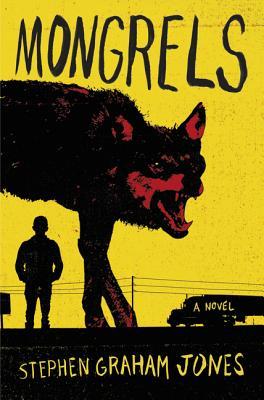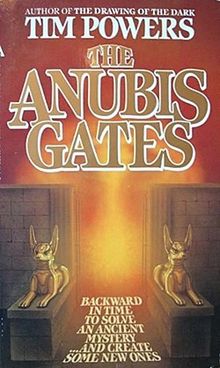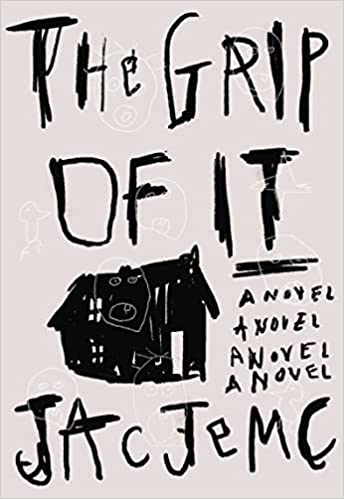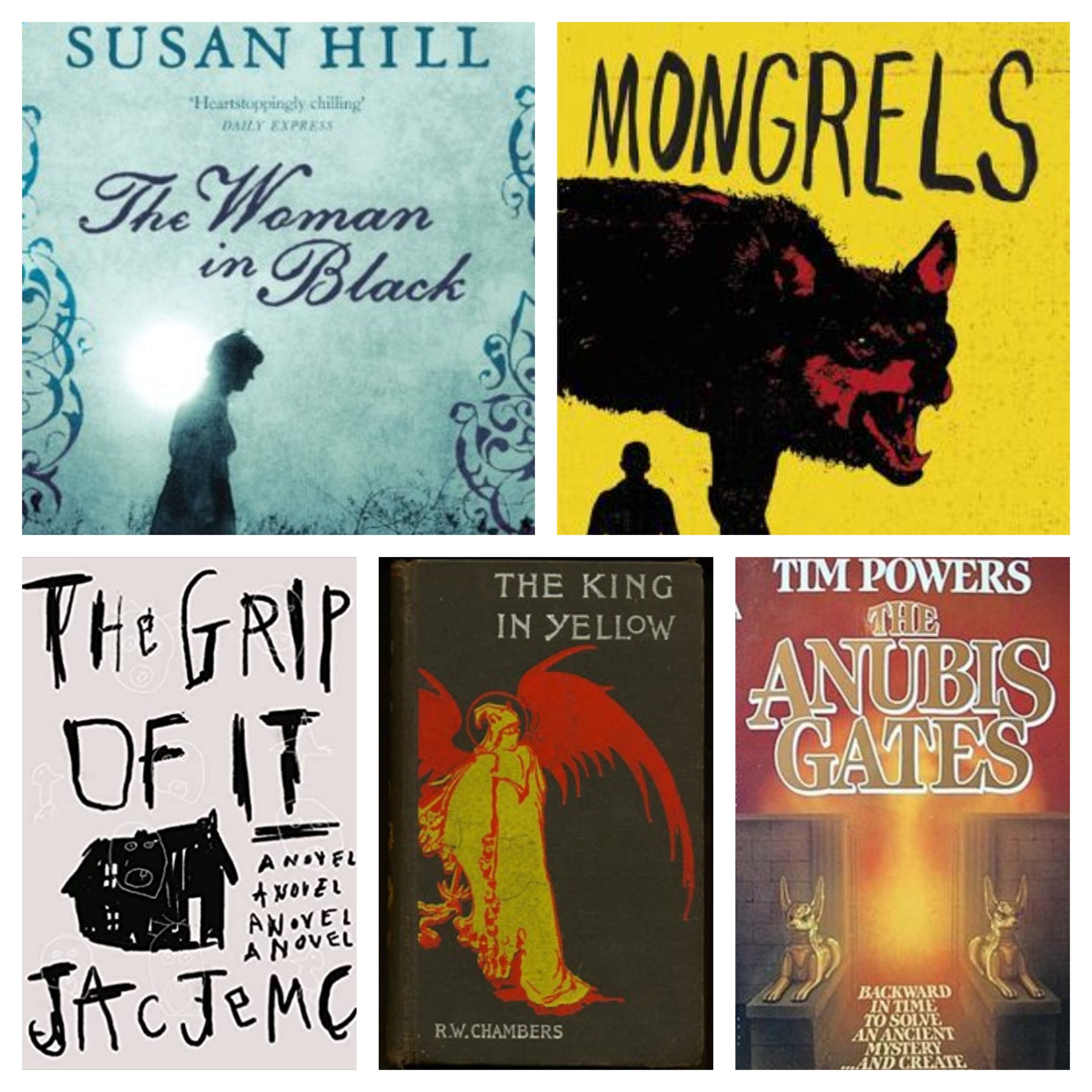Welcome to another trip through the annals of horror history. One thing I wanted to touch on in this bunch is that some of the books in this list may not be what it classically thought of as horror necessarily. In this bunch specifically, Tim Powers’ fantasy/sci-fi/horror/wtf amalgamation is an example, but there are many others. Some like Jane Eyre and Rebecca aren’t horror in the strictest sense but serve as examples of the gothic novel that influenced so many horror novels with fog-drenched moors and dark, mysterious mansions and castles. Some like the aforementioned Anubis Gates, Mythago Wood and the Gormenghast trilogy are typically seen as more dark fantasy but they have enough horror elements that someone saw them as significant enough to mention. There are many on the list that some literary snobs may label as “thrillers” rather than straight up horror like Silence of the Lambs, The Killer Inside Me and Perfume: The Story of a Murderer. But you know, screw those guys. I know plenty of people who are much more scared by serial killer fiction than stories of monsters and ghosts because it’s something that could really happen to them. All this to say… relax, folks. It’s a list, and I’m gonna read everything on it (well…most things anyway… not sure how I feel about reading EVERY Goosebumps book…), so it doesn’t matter if you personally don’t consider something horror. Someone did, so I’m gonna check it out.
Anyway, that’s enough yik yak for now. In this batch, we’ve got a heartwarming tale of a werewolf family, a time traveling romp with a body swapping werewolf (kind of), a haunting classic ghost story, a fractured haunted house narrative and a short story collection considered a major influence on H. P. Lovecraft.
Also for those just joining me, this is my journey through the following “Best of” Horror lists:
Reedsy Discovery Best Horror Books
Stephen Jones & Kim Newman’s Horror: 100 Best Books
Stephen Jones & Kim Newman Horror: Another 100 Books
If you want to check out my previous entries, they can be found here:
Part 11 | Part 10 | Part 9 | Part 8 | Part 7 | Part 6 |Part 5 | Part 4 | Part 3 | Part 2 | Part 1
Now let’s rip off that band-aid and let it bleed!

Mongrels (Stephen Graham Jones, 2016)
List: Reedsy Discovery
I liked this one pretty well. Structured as more of a slice-of-life on the road with a nomadic family of werewolves, the youngest of whom is the narrator and unsure of whether he will ever change at all which leaves him grasping desperately for a place in the world. If Mongrels has any fault, it is primarily with the lack of an actual overarching narrative. Instead we’re trated to a series of vignettes that show the struggles of this family on the fringes of society and ultimately of how important they really are to one another. Still, the three main characters are richly developed and interesting to read about. Jones’ sense of place in The Deep South is strong as well. I actually think this would be a good horror novel to recommend to people who aren’t normally into horror since it has a strong message of togetherness and importance of family to it.

The Anubis Gates (Tim Powers, 1983)
List: Jones/Newman
Holy cow… What a whirlwind, madcap, strange journey this was! Brendan Doyle is a struggling author doing a biography of a lesser known 19th century poet named Ashbless who is invited to the estate of a mysterious and eccentric rich guy looking for an expert on Coleridge (who Doyle is also well-versed in). This sends Doyle on a time traveling adventure back to 1810 where he must contend with ancient Egyptian sorcerers, a body-switching werewolf, a grotesque and deformed clown beggar who has tiny soldiers in eggshells at his beck and call, bizarre eyeless creatures in the dark, a brainwashed clone of Lord Byron who is on a mission to kill the king and about a thousand other subplots all crammed deliriously and with reckless abandon into nearly 400 pages creating a rollercoaster ride of absurdity, cleverness and plot holes in equal measure.
If you couldn’t tell, I had a lot of fun with this book. Purely from a horror standpoint, it may leave one somewhat lacking as it’s more of a hodgepodge of dark fantasy and sci-fi time travel with scattered horror elements in places. But it has a crackerjack pacing that almost never lets up that kept me engaged throughout the whole novel. It does leave some plot strands dangling in a couple places or resolved in slightly less than optimal ways but overall, I definitely recommend it if you like your time travel stories.

The Woman In Black (Susan Hill, 1983)
Lists: NPR, Reedsy and Jones/Newman
Susan Hill’s classically styled ghost story is an excellent piece of Victorian style literature that serves as an ode to her forefathers like M.R. James and E.F. Benson while also offering a clarity of purpose and brisk pacing that many 19th century stories often lacked, buried amidst overly florid prose and dull exposition. I had seen both films versions and both were fairly faithful to the novel for the most part, capturing it’s haunting gothic imagery pretty well. This story of a young and naive solicitor finding a tragic family secret within the walls of a manor he was sent to organize after the death of the owner unfolds at a mostly ideal pace, giving bits and pieces of the mystery while hinting at the true threat via the wary townsfolk without getting bogged down in massive exposition dumps (for the most part anyway…there is a sizable one toward the end, a little tedious but somewhat necessary). Overall I thought this was a well-written, brisk read that offers a great throwback to the classic English ghost story.

The Grip of It (Jac Jemc, 2017)
List: Reedsy Discovery
The premise will feel familiar here. A young couple, in an effort to escape the hustle and bustle of city life and repair their damaged relationship in the wake of the husband’s gambling problem, get a very good deal on a big old house in a small town. Their neighbor is foul-tempered and hermitic. The townspeople give them sideways glances and speak of the hazy past of the house as a place of tragedy but no one can quite nail down exactly what happened. Soon the couple begins witnessing mysterious things that threaten to tear them apart and drive them mad.
There are some good ideas here, but like Penpal, The Grip of It has an overly formal and vaguely pretentious writing style that rubs me the wrong way. Later sections of the book devolve into borderline nonsense seemingly intentionally trying to alienate the reader. Also despite the slow burn nature of the book, I really didn’t feel like it fleshed out the characters well enough to care about them and what’s happening to them. It also left too many plot threads dangling and without purpose. The beach and the cave? The weird drawings? I mean, I don’t need everything overexplained and often get bugged when something does try to overexplain. But I need SOMETHING at least. Otherwise it’s just a bunch of random stuff and then the end. And what’s interesting about that? While this wasn’t as bad as that Dean Koontz book The Mask, it still did nothing to give me reason to seek out anything else by Jac Jemc.

The King In Yellow (Robert W. Chambers, 1895)
Lists: NPR (just the story “Repairer of Reputations”, Jones/Newman (the whole collection)
Having finally gotten around to reading William Hope Hodgson’s House on the Borderland, considered one of the major influences on H.P. Lovecraft and other weird fiction, I thought it was about time I finally got around to another major influence, this collection of stories by Robert W. Chambers. The titular tome, a strange play that is said to drive everyone mad who reads it and is a clear predecessor of the Necronomicon, sends its tendrils coursing through the first half of this collection in stories like “The Repairer of Reputations” and the most overtly horror-themed story “The Yellow Sign”. More than just establishing a cursed literary work, Chambers also builds a kind of unfathomable mythology evoking locations like Hastur and Carcosa and The King in Yellow himself. Interestingly Lovecraft would bring many of these elements into his Cthulhu Mythos, perhaps as a kind of homage to a major influence. Unlike Lovecraft and many other writers of weird fiction, Chambers is a romantic at heart and several of the later stories in the collection are basically light fantasy, war stories and even straight up romantic tales of gallivanting about Paris with nary a gibbering madness in sight. To be clear, stories like “Rue Barrée” are well-written and constructed with a fanciful prose tinged with a bit of humor at times. But for those expecting something more scary may do well to just read the first half of this collection and move on. Overall, it’s a solid collection with a handful of indispensable stories in the horror canon but as a whole is a little tonally inconsistent.

